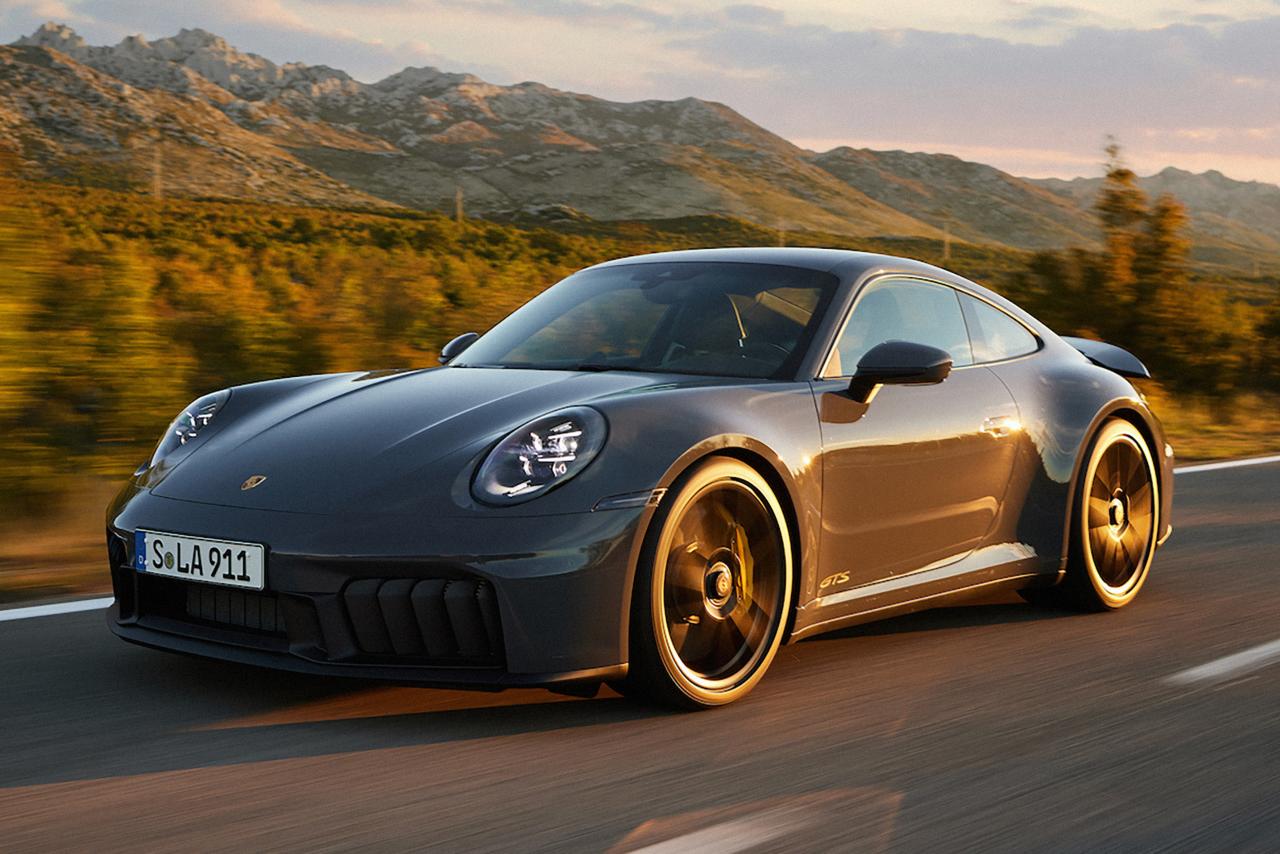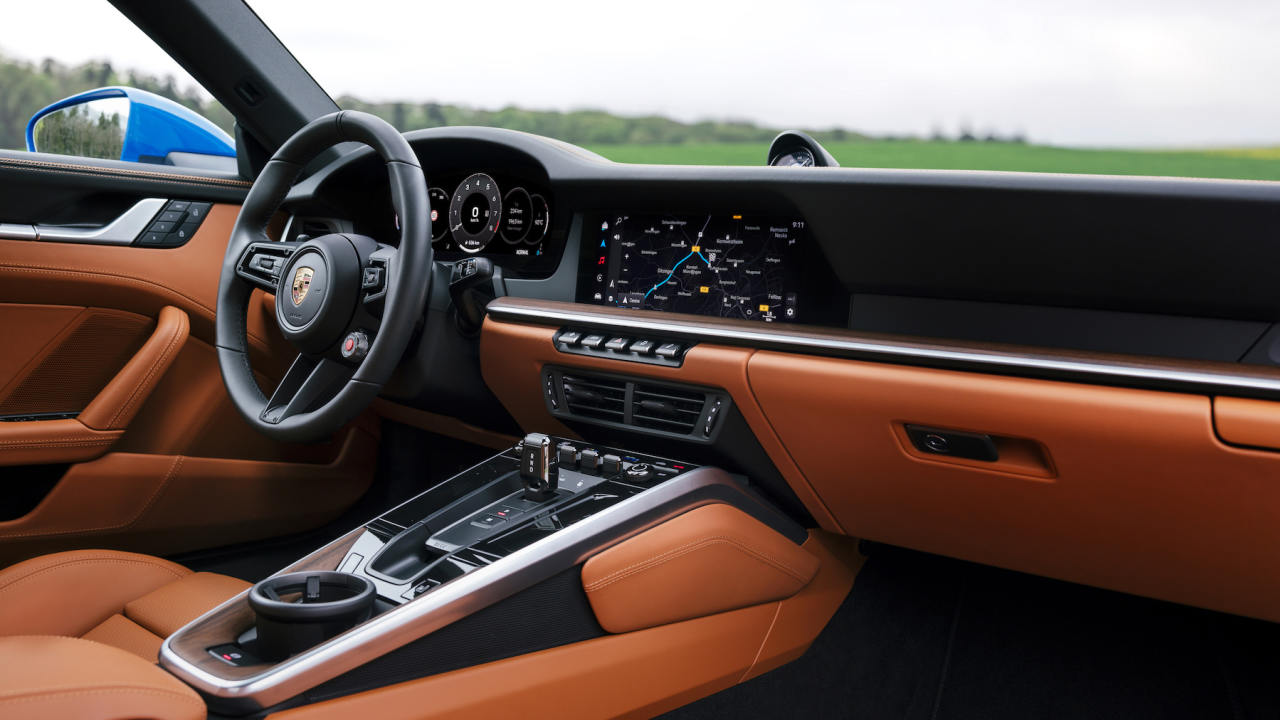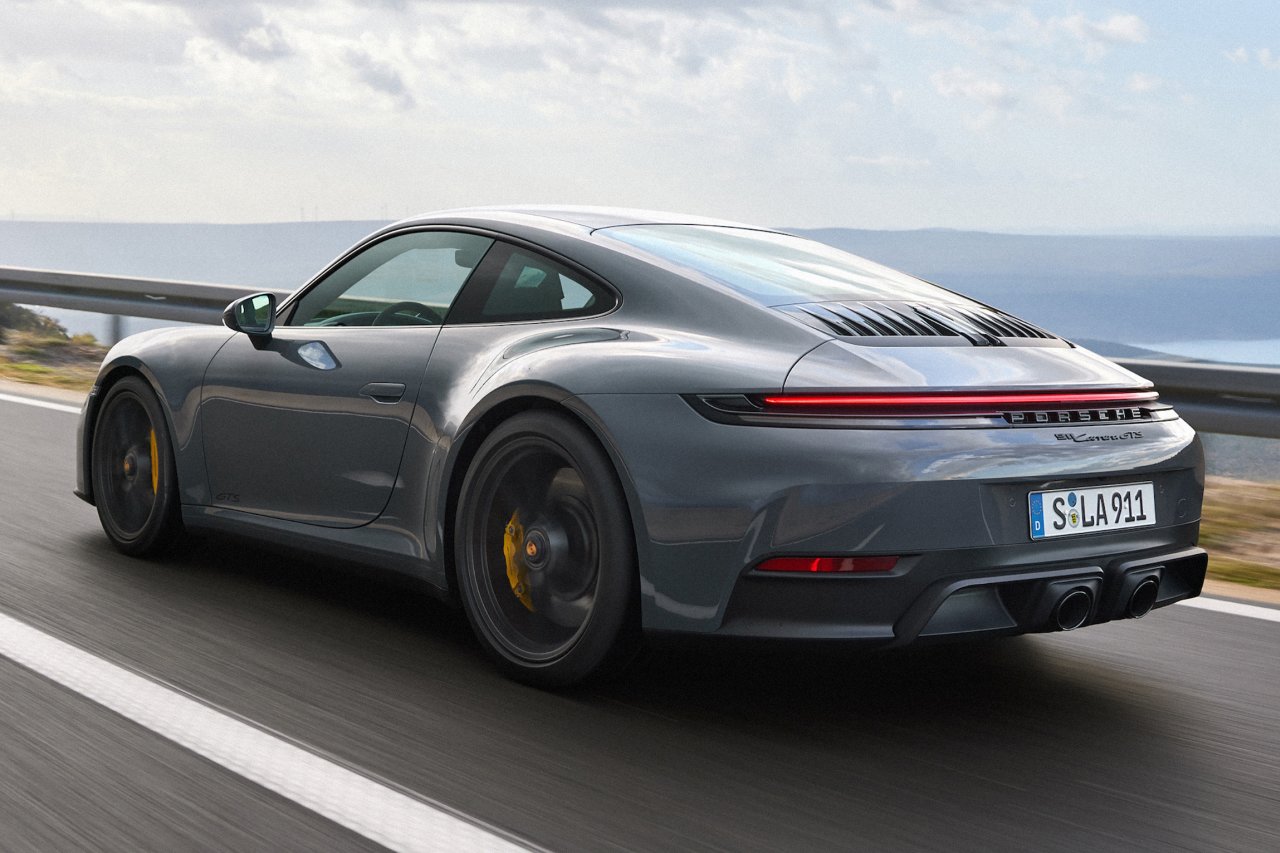The Porsche 911 Reboot is Quicker, Faster and More Evolved

I see a lot of sad faces staring out from Porsche’s monkey house these days. Born of racing and performance, the Stuttgart-based company now makes most of its money slamming together luxury SUVs in places like Bratislava. Having once perfected the shimmering, soul-shaking resonance of a naturally aspirated flat-six engine, Porsche now spends the majority of its R&D budget on electrification. Shhhh.
Change falls particularly hard on the perennial 911 Carrera. Air-cooled, open-throated boxer engines are long gone. The 911 models available with a manual transmission are down to one (the 911 Carrera T). Analog gauges, levered hand brakes, hydraulically assisted steering. Porsche is fresh out of those bananas.
With the latest design generation of the 911, Porsche has driven the monkey house into another frenzy. Code-named the 992.2, the reboot ushers in a new generation of exotically hybridized, voltage-enhanced engines/transmissions that will power Porsche from here to full electrification. By the end of the decade, the only 911 may be a hybrid 911. Please sir, put down the poo.
Note: The 911 Carrera base model carries on with a refreshed 3.0-liter twin-turbo flat-six (388 hp). The T-Hybrid spec is currently paired with GTS and GTS 4 models.

I don’t get the hybrid hate. I really don’t. Having spent a few days in a new GTS T-Hybrid ($189,145, as tested), I promise you history’s most complete sports car is only more complete, with generationally evolved roadholding (rear wheel steering, optional electrohydraulic roll stabilization); even more fabulous chassis and tires (matched and staggered Michelins); and an all-new, discretely electrified 3.6-liter flat-six, capable of all the patter and chatter, chiming and guttering, whispers and wails of any other latter-day Porsche. Behold a more socially responsible hellbeast.
I dig the look. The redesign consolidates all the front lighting functions into the headlamp assemblies. The front corners of the car are dominated by two sets of five vertical shutters, channeling cool air to the radiators when needed.
For some peevish fans, the T-Hybrid signals the End Times: Oh my God, the stop/start system shuts down the engine at intersections. If I want it to be obnoxiously loud I have to press a button (the Active Sport Exhaust). Deal with it, Richie Rich. Other people have to breathe, you know? Try looking at the upside.
More power, for example. The turbo flat-six generates a hairy-chested 478 hp and 420 lb-ft of torque all by its lonesome. Inside the eight-speed PDK transmission housing—coupled directly to the output shaft, actually—an electric motor adds another 53 hp and 110 lb-ft of insta-torque to the propulsion mix. The T-hybrid’s net output stands at 532 hp at 6,500 rpm and 449 lb-ft (2,000-5,500 rpm), pitted against a curb weight of 3,536 pounds—only 110 pounds heavier than the previous GTS.

Once prodded, the T-Hybrid stampedes like a startled Cape buffalo. One has the sense of a lot of quick-twitch muscle, violently engaged, amid indignant mooing. Porsche says the rear-drive GTS T-Hybrid hits 60 mph in 2.9 seconds and clears the ¼-mile in 11 seconds flat.
In May of last year, Porsche test driver Jörg Bergmeister lapped a GTS T-Hybrid around the Nürburgring Nordschleife in a steaming 07:16.934, shattering the previous model’s record by 8.7 seconds—an eternity in Nürburgring time.
Sounds about right. On an undisclosed stretch of industrial frontage I was able to stretch the T-Hybrid’s legs a bit. With the launch control engaged, the rear tires barely squeak, as every pound-foot sent to the rear axle is neatly converted to wheel rotation. Oof! The car steps off. The nose stays level. Be ready with those paddle shifters; 2nd gear comes up fast. Blink twice and you’re overdue for 3rd gear. Whaa-Bhaa-BHAA, goes the engine, bouncing off the rev limiter.
You know what hasn’t changed? Consumption. As crazy as it might seem, the T-Hybrid scores virtually the same fuel economy as the previous GTS model. As configured, Porsche’s hybrid system is less focused on reducing carbon emissions than tailpipe pollutants such as nitrogen oxides, particulates, sulfur dioxide and volatile organic compounds. It’s worth noting that in Europe, Asia and the Pacific Rim, it’s not only CO2 but the deadly pall of vehicle pollution over megacities that is motivating higher standards, taxes and penalties.
The following is a rough account of what it will take to keep a 532-hp Porsche 911 street-legal and sanction-free in most of the world for the balance of the decade.
It begins with lambda. Engineers use the 11th Greek letter to denote the ideal, or stoichiometric, air-fuel mixture ratio in the combustion cycle (where lambda equals 1). Transient conditions of load and demand will cause engines to run rich or lean, increasing emissions of hydrocarbons or nitrogen oxides, respectively.

Porsche’s hybrid solution includes a brilliantly cute electric exhaust turbocharger. With an electric motor sandwiched between the compressor and turbine, the e-turbo is able to smoothly spin up or slow down, agilely matching load and demand with the ideal fuel-air mix.
Even cuter: The e-turbo doesn’t have a wastegate to release overpressure; instead, when conditions are right, the integrated motor switches to generator mode, harvesting exhaust-gas energy to return to the battery.
By now all the luxury high-performance brands have worked through their first generation of hybrid powertrains. I think I’ve driven them all. Some are wonderful (McLaren) and some are less so (Ferrari). What distinguishes them is the quality of transparency—the extent to which the hybrid’s machinations require the driver’s attention, intrude on the experience or compromise the driving.
The T-Hybrid system is so thoroughly integrated to the machine, so organic to its operation, so faithful to enthusiast’s expectations of performance, it’s practically undetectable. Hell, it might not even be real, for all I could tell. Hybrid hoax!
What stays with me is how familiar the hybrid 911 feels, even when the technology is utterly transformed.
That will shock the monkeys.
2025 Porsche 911 Carrera GTS T-Hybrid

Base price $164,900
Price, as tested $189,145
Powertrain Gasoline-electric hybrid, with a 3.0 liter DOHC flat-six engine with electric exhaust turbocharger, direct injection and variable valve timing/lift; eight-speed automatic transmission; integrated traction motor (53 hp/110 lb-ft), 1.9-kWh, 400V traction battery; rear wheel drive.
Power/torque 532 hp at 6,500 rpm; 449 lb-ft at 2,000-5,500 rpm
Length/wheelbase/width/height 173.9/96.5/80.0/51.0 inches
Curb weight 3,536 pounds
0-60 mph /1/4-mile elapsed time 2.9 seconds/11 seconds (Porsche)
EPA fuel economy 17/24/20 mpg, city/highway/combined
Cargo volume 4.8/13.1 cubic feet, front trunk/rear cabin
Komentar
Posting Komentar